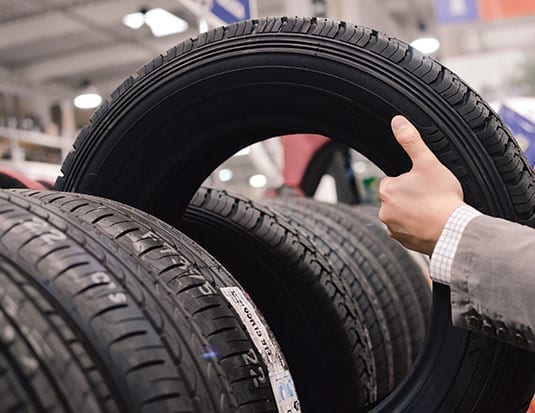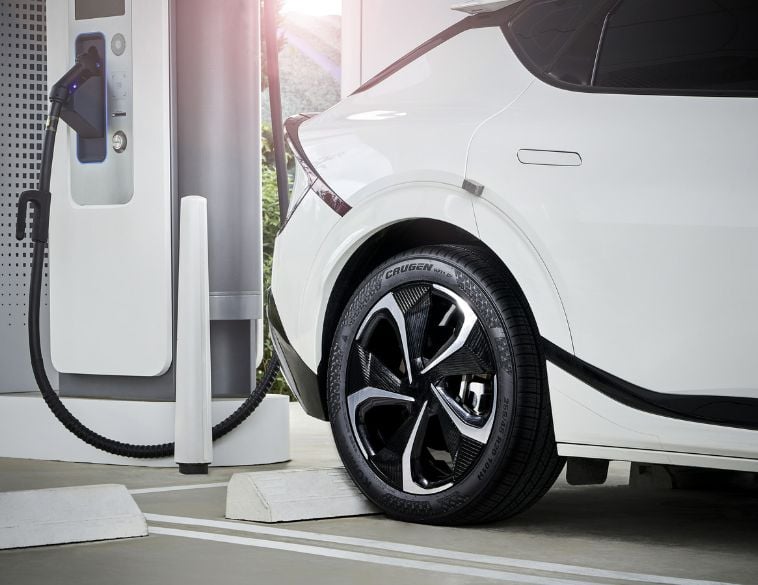If you’re thinking of investing in new equipment for your shop, stop and think about the real return on your investment.
Every business owner must decide how best to invest in new equipment. While it’s easy to focus on the sticker price, it’s wise to look at the actual return on investment (ROI).
The old adage, “You get what you pay for,” certainly rings true when you’re looking at new equipment. The more you spend, the better the quality, and the longer the expected life of the product. But could it be possible that the more you spend, the more that piece of equipment will help you earn?
“There are people out there who will say that an aligner is an aligner,” explains John Peron, Director of Canadian Operation for Hunter Engineering. “While it’s true that you can get one for as little as $20k, that doesn’t mean you’ll be able to work with ADAS (Advanced Driver Assistance Systems), or have vehicle specific work instructions to perform the corrective adjustments. It also doesn’t mean you have the appropriate tools to ensure the steering wheel is always straight—without having to do any extra work. Without these features and others, like tools and kits, technicians are left on their own to make decisions that are not always the same based on the vehicle brand, make, or model.”
Entry level aligners, Peron argues, are not going to easily show you the specific vehicle you’re working on, or present you with a video instruction of how to perform the adjustment, if for some reason you can’t remember what to do on that particular vehicle.
So when it comes to the sticker price of a new piece of equipment, keep in mind the features and benefits—and the long term cost of ownership—that sometimes get lost in the conversation, when you simply look at the price of the equipment.
An investment in quality
Peron stresses that Hunter isn’t interested in just selling equipment. The investment has to make sense for the purchaser. “We’re upfront with our customers before they invest in our equipment,” he adds. “If it’s not going to be profitable for them, then we don’t want them to make that specific investment, and will direct the conversation to a different solution.”
Before selling any equipment, Peron and his team insist on a face-to-face meeting to analyze the retailer’s needs and to determine if there’s a fit. “We have created a number of tools to help our customers analyze the potential ROI,” Peron says. “This allows our customers to see if the new piece of equipment makes sense for them in their shop.”
While Hunter’s equipment is available with features and benefits that many competitors don’t offer, the real value comes from the sales tools, which allow the shop owner to use Hunter’s equipment to make improvements to their business.
Hunter also has an ROI calculator on their website (hunter.com/alignerroi). By plugging in a few numbers specific to your store, and by applying industry standards to the results (or adjusting them to suit your specifics), you can tell immediately what kind of return you can expect, and how quickly the equipment will pay for itself.
Quick Check Drive
One of the newest and most exciting pieces of equipment available from Hunter is the unmanned alignment inspection system, Quick Check Drive. It can scan a vehicle every 3-5 seconds with no stopping or labour required, which means it can automatically scan every vehicle that drives into your service area.
That scan then prints out a report for the vehicle owner, explaining whether the vehicle needs an alignment, and how misaligned the vehicle is. This is a great way for the service advisor to start a conversation about alignments with the customer, and a great sales tool for the retailer.
Add a Quick Tread Edge to that same inspection lane, and you’re sure to be selling more tires to more customers. Hunter’s drive-over tread depth system automatically measures the tread depth of each tire from edge to edge, in the same 3-5 second time period mentioned above.
“Making the sale is a lot easier when you have our alignment and tread depth report in front of you,” Peron adds. “It’s very detailed, but it’s also very easy for the average consumer to see at a glance that they need an alignment or new tires.”
The printed report also takes the pressure off the service advisor. “You can have all the greatest technologies in the world in your shop, but if the service advisor isn’t comfortable getting a conversation started with your customer, then everything falls apart,” Peron says.
And since everything is monitored and all the reports are stored in the cloud, this technology translates into a great management tool, because it will tell you how many vehicles have driven through your inspection lane on a given day, what kind of problems each vehicle had, and how many of those were turned into a sale. Those numbers can then be applied to the ROI formula in order to determine how much your shop is earning with your new equipment.
“It’s a great way for management to make sure the inspections are being conducted, that advisors are speaking with consumers about their vehicles, and that vehicle reports are actually translating into more sales,” Peron says.
The Flightboard
An additional key sales tool offered by Hunter to support this inspection technology is the Flightboard. Much like the screens at an airport display arrival and departure information, Hunter’s Flightboard displays the results of all inspections in real time. It is an interactive communication tool for service advisors and guests.
“Every vehicle that comes through is listed on the Flightboard,” Peron explains. “We find that most consumers will walk into the waiting area or service department, see their vehicle on the Flightboard, and ask, ‘What’s this? Why is my vehicle on the board?’ This gives the service advisor an opportunity to start the conversation and get into the sales process.”
Connectivity
What sets Hunter apart from the pack when it comes to ROI, is the tools they offer business owners to help them track productivity. Hunter’s online business intelligence tool, HunterNet, not only keeps track of the number of inspections, alignments, and balances taking place at your store, but it can also push these reports to you so that you can make sure everything is on track.
Management can receive reports twice during the day to review the status of daily goals vs performance. This report is pushed to mobile devices via text or email.
“You can connect your wheel balancer, your aligner and your inspection equipment to the same report,” Peron explains. “Doing so will give you a trend, by month, by week (or by whichever frequency you choose), to tell you exactly where your opportunities may be for growth, and how well your staff is capitalizing on those opportunities.”
When considering a new purchase for your store, think about the bigger picture. While sticker price is important, what will your new equipment allow you to do, and how much can you improve sales, and your bottom line? In short, think about the real ROI.



